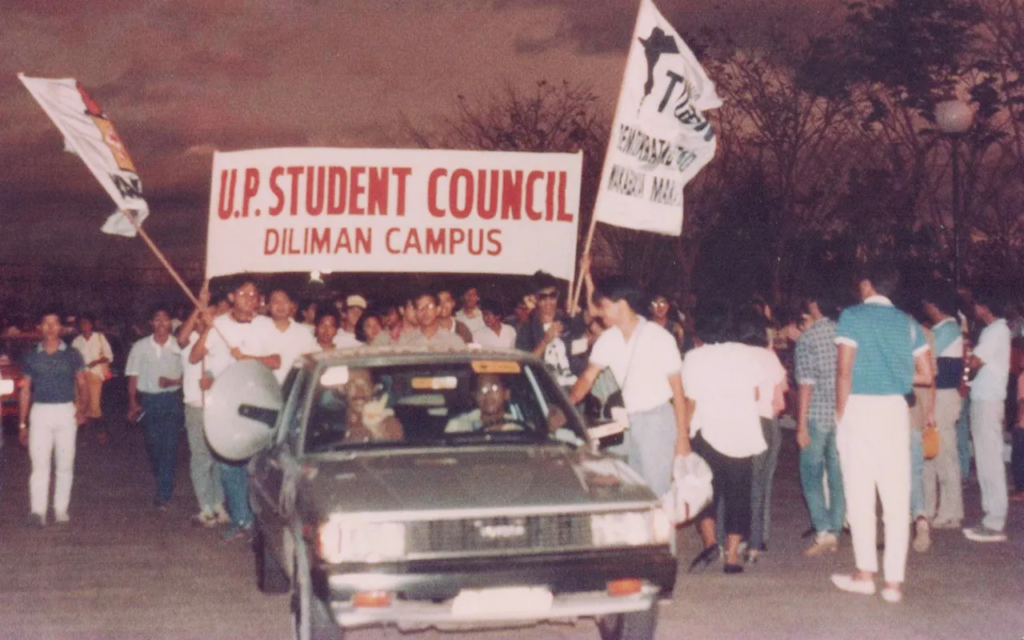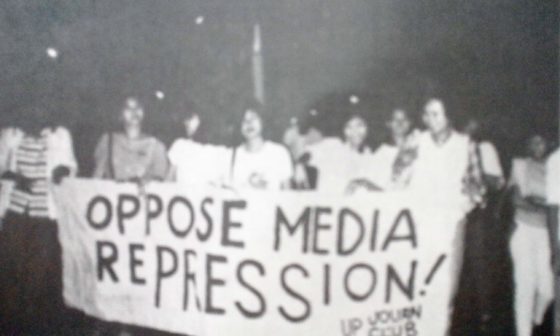Peaceful yet significant change is still in the cards for Ricardo Jose when the 1986 snap elections between then-dictator Ferdinand Marcos and Corazon Aquino was announced. At least, that’s what he thought for the regime back then.
“We guarded the ballots very carefully,” says Jose, of his stint as poll-watcher for the National Citizens’ Movement for Free Elections (NAMFREL). It didn’t take long for him and his colleagues to realize the election was rigged; the Marcoses had put on a show of democracy to appease the rest of the world. With their initial hopes for the snap election dashed, the professor and his colleagues turned to other avenues.
Rallies and demonstrations became a norm for them. “We staged a protest at Channel 4,” he says. Channel 4, now ABS-CBN, had been one of the TV stations shut down and seized by Marcos’ cronies.
Jose also tells of how he and his colleagues started having meetings in UP about what else they could do and how UP as an institution could contribute.

They also had to consider the classes. “There were regular classes at that point, so we decided to just hold ‘alternative’ classes instead.” It was important for the students to be fully aware of what was happening, Jose, who is currently teaching Philippine History in UP, says.
But Jose noticed that Filipinos, especially students, are in danger of one of the worst things that could happen to a people who went through such a violent time: forgetting.
It’s not the commemorations that people remember, however. During commemorations, they close down EDSA, Jose says. The resulting traffic jams, more of a nightmare than they already are, are what people commit to their memory instead.
The failure of the educational system to get more in-depth about the events of the historical “peaceful revolution” is a factor, too. “Not much is included in the textbooks,” the history professor laments. “It’s not dramatized enough.” Thoroughly understanding and appreciating historical events involve experiencing the event firsthand, says Jose.
“People think now that Martial Law was a quiet and progressive era,” he says. “Yes, it was quiet, because the government censored the news. We didn’t really know what was happening,” he says. Mainstream news outlets, of course, did not and cannot, run stories of poverty, the crashing stock market, and human rights violations.
“History and journalism have a very close relationship. Journalism is history in a hurry,” the former professor of History of the Press quips. Journalism, even underground, has had the power to push forward awareness, social change, and revolutions.
What remains to be seen, however, is how journalism could keep alive the truth of the Martial Law horrors in the minds of today’s youth. “They should be aware of the true conditions during that era,” Professor Jose says firmly.
“The fact that they’re millennials doesn’t mean that they’re separate from that event. They have to be aware of what really transpired, the sacrifices made. Nothing should be taken for granted. What is in the present is always the result of what has happened in the past.”
This story is the second of UP Journalism Club’s three-part series of anecdotes on the events that led to and transpired during and after the 1986 People Power Revolution.
The contents of this post were retrieved from a Wayback Machine archive of UPJC’s old website dated July 15, 2024, 11:48:53 GMT.
